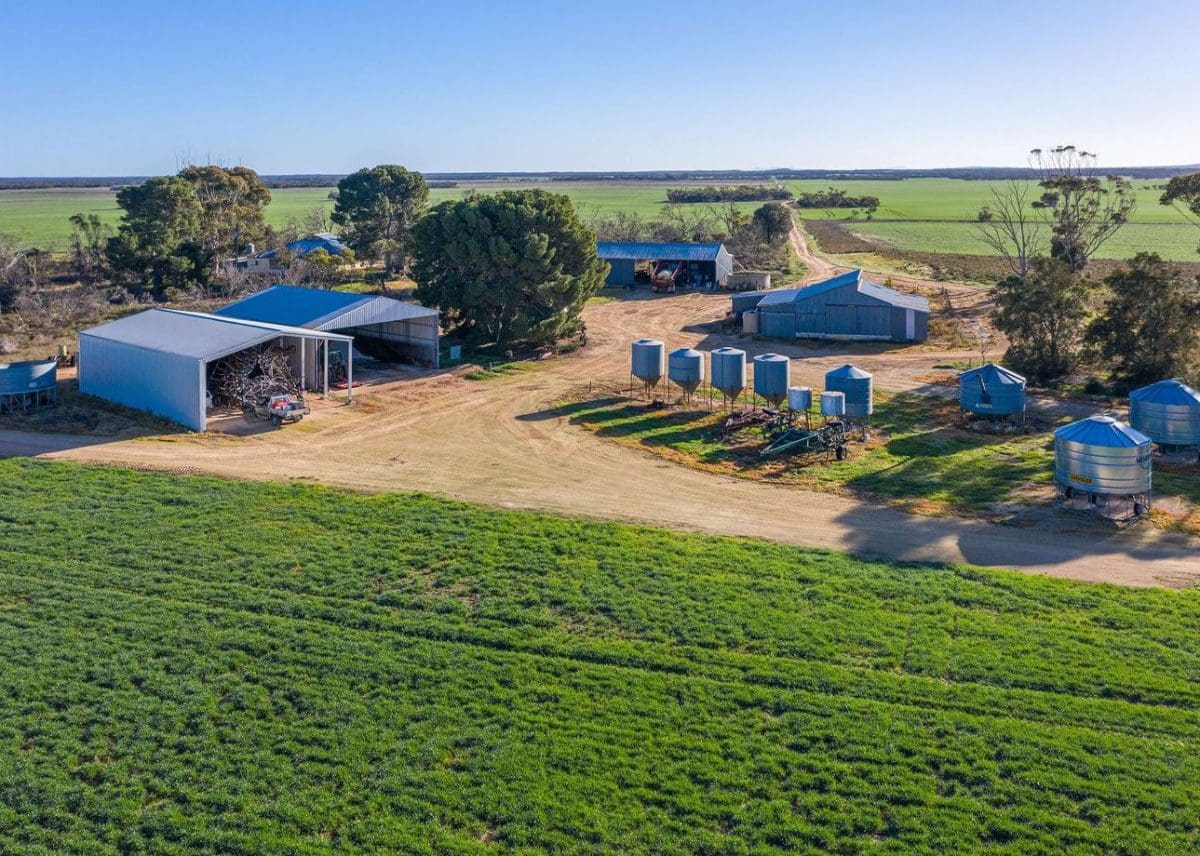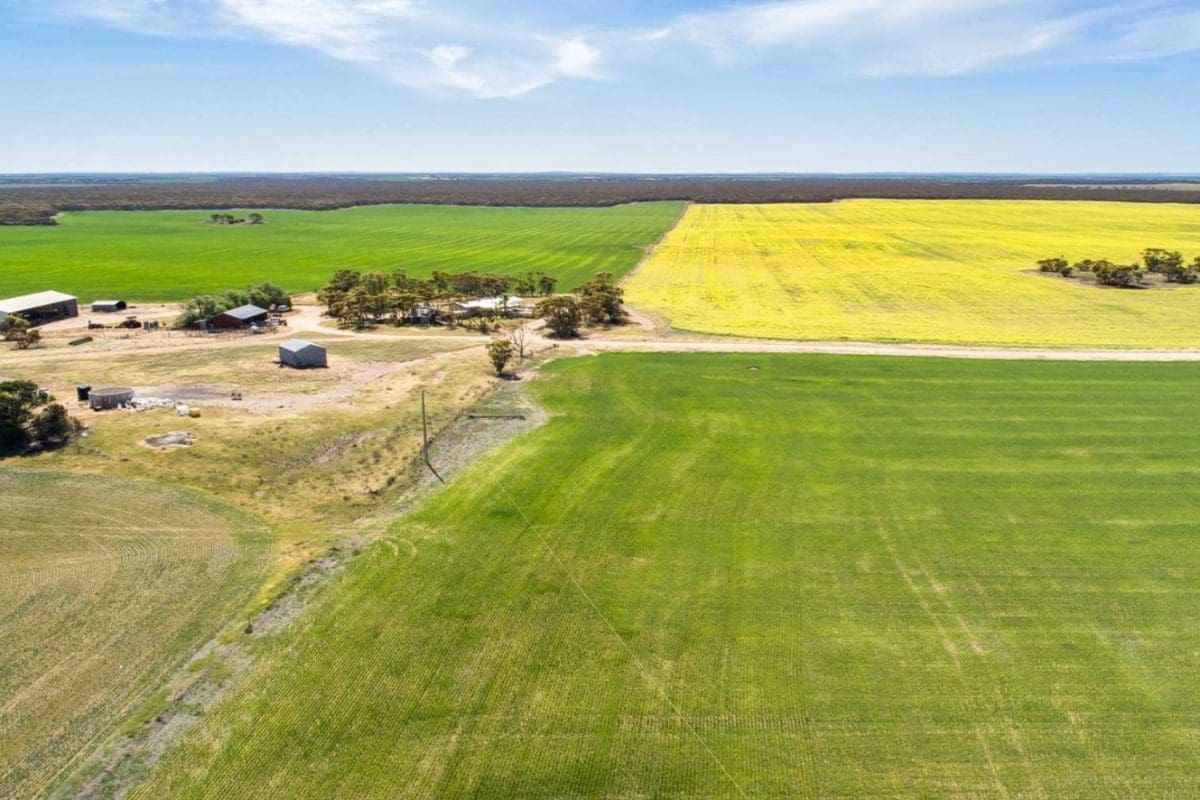
Windella at Ungarra sold at auction earlier this month. Photo: Elders
CROPPING and mixed-farming properties on South Australia’s Eyre Peninsula (EP) are in hot demand, mostly from existing operators wishing to expand, and from relocating or expanding farmers from SA’s Yorke Peninsula (YP) and Mid North regions.
Elders Port Lincoln agent Darryn Johnston said while values for Lower EP properties with an annual average rainfall of at least 400 millimetres were trading steady to slightly higher on 2018 rates, values for properties on the east-central EP were rising considerably.
“Around Port Neill and Ungarra is the big growth area,” Mr Johnston said.
The region is home to two proposed grain export terminals, Cape Hardy and Port Spencer, with their sites only a few kilometres apart, and a short distance south of Port Neill.
Even if only one of the two gets off the ground, it will provide additional competition on EP to SA’s major bulk handler Viterra through its Port Lincoln terminal, and to T-Ports at Lucky Bay near Cowell, which exported its first grain earlier this year.
“With T-Ports going, and another couple of groups looking at developing other sites, there are certainly more options for grain.”
Mr Johnston said increased grain-marketing options added to the appeal of the region, but its unique almost island-like geography, relatively reliable rainfall and affordability were its biggest assets.
“EP has these physical borders; the coast and pastoral land around us separate us from all other cropping regions,” he said, adding that this was a plus for biosecurity, and for marketing of produce.
Growth in values
Mr Johnston said EP country with an annual average rainfall of 250-300 millimetres has seen the biggest growth in value, and has been fetching $2720-$3700 per hectare, up around $500-$740/ha on 2018 values.
With Mid North and YP country easily fetching more than $5000/ha, the value in EP country is easy to see for family farming operations wishing to invest.
“They can sell where they are, or borrow against it, and buy two or three times the area on the EP.
“People are looking at EP not because of higher production, but because of its consistency.
“It’s mainly locals getting bigger, but there is a lot of outside pressure too.”
He said the agency had also been fielding inquiry from eastern states and Western Australia, but COVID restrictions had prevented action from outside SA, and most vendors were looking to retirement or semi-retirement.
Room for sheep
Some central and Lower EP places also have sheep, or infrastructure which would allow them to be reintroduced.
A recent example is Windella, which sold locally at auction on 12 October for $3705 per arable hectare to demonstrate the strength of demand for mixed-farming properties.
Located 29km north of Ungarra, the 567ha property has 543ha of arable country, and receives around 350-375mm of rainfall annually.
Windella has not run sheep for some years, but has a shearing shed and yards.
It has successfully grown wheat, barley, canola, lupins and vetch.
Mr Johnston said while Upper EP had pockets which had experienced poor seasons recently, sheep and low-cost cropping provided most farmers with an income stream, even in tough years.
“They don’t have 4, 5 or 6 tonne-per-hectare yields, but they do have livestock on most Upper EP places.
“Upper EP doesn’t rely just on cropping.”
The Elders Rural Service listing of Pineview, Pinerow and Kidman’s covers 2056ha in total, including 1521ha of cropping country.
For sale through an expressions of interest closing today, the properties between Cleve and Cowell have been running roughly 600 breeding ewes and 250 ewe lambs as part of the mixed-farming operation.
Improvements include two homes, several machinery and fertiliser sheds, two shearing sheds and good fencing, with water coming from dams, windmills and bores which supply water troughs.
The soil types include loam over red clay with some shallow soil on rock with mostly sandy clay and sandy clay loam soil texture.
The average annual rainfall in this area is approximately 325mm-375mm.

Malolo at Lock is for sale. Photo: Nutrien Harcourts Wudinna
Malolo is 15km north-east of Lock, and T-Ports’ inland accumulation site.
It is listed for sale with Bill Sargent and Justin Thompson of Nutrien Harcourts Wudinna and covers 3751ha, which includes land held under Heritage Agreements, and 1290ha of cropping country.
A further Elders listing is Darke’s View at Darke Peak, which covers 2433ha, including 2125ha of arable country.
Darke’s View has infrastructure for sheep and for cropping, and is located in a 325-350mm rainfall zone.
It is for sale by expressions of interest closing 12 November.
Grain Central: Get our free daily cropping news straight to your inbox – Click here

HAVE YOUR SAY